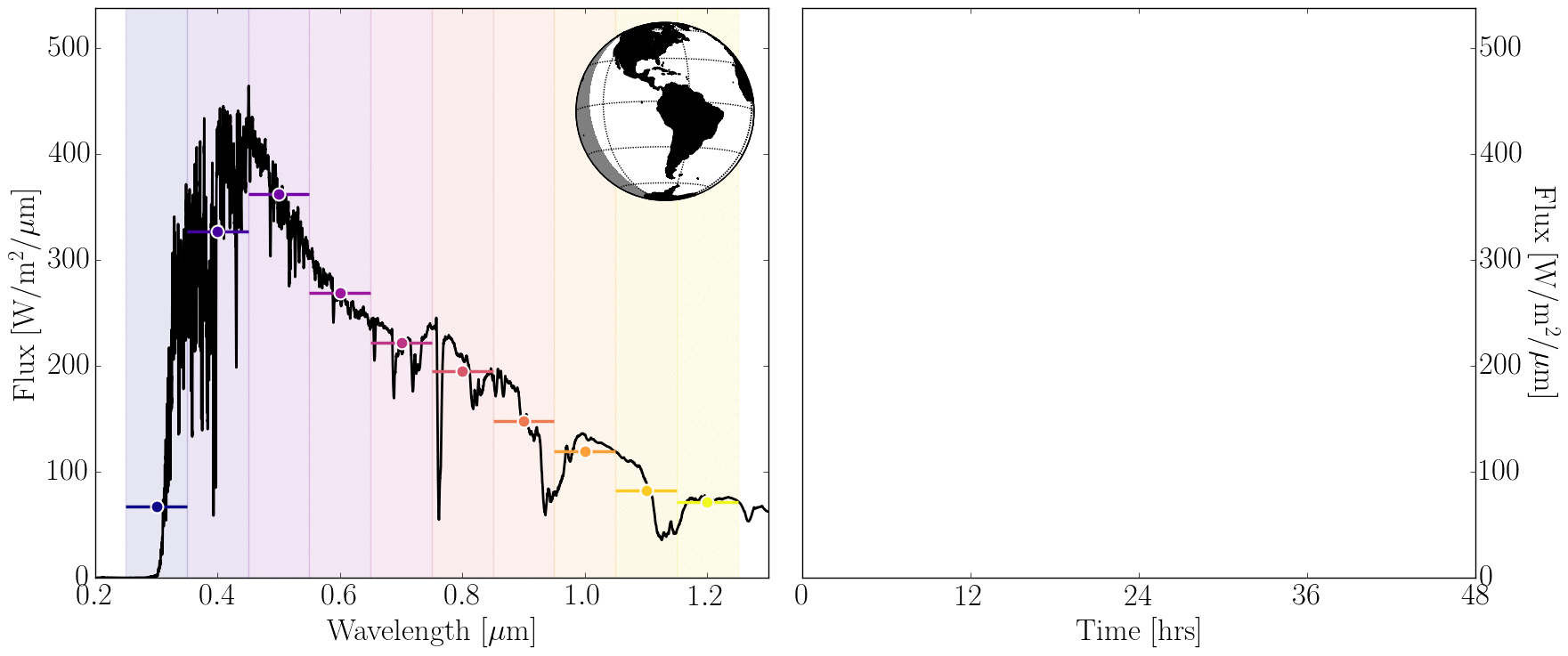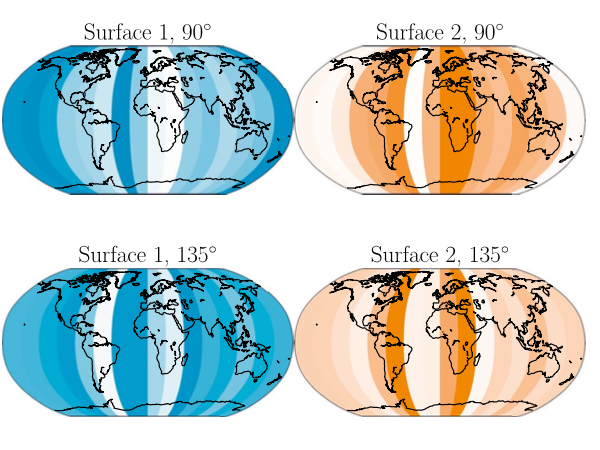Editor’s note: Astrobites is a graduate-student-run organization that digests astrophysical literature for undergraduate students. As part of the partnership between the AAS and astrobites, we occasionally repost astrobites content here at AAS Nova. We hope you enjoy this post from astrobites; the original can be viewed at astrobites.org.
Additional note: We are aware that astrobites.org is currently down. The AAS IT staff is working to get the site back online as quickly as possible.
Title: Detecting Ocean Glint on Exoplanets Using Multiphase Mapping
Authors: Jacob Lustig-Yaeger, Victoria Meadows, Guadalupe Tovar Mendoza, et al.
First Author’s Institution: University of Washington
Status: Published in AJ
In the coming decades, there are plentiful opportunities and ideas for space-based missions that may be able to detect life on other planets — the James Webb Space Telescope (JWST), LUVOIR, the Origins Space Telescope, HabEx, and more. But, what would those signs of life look like, and what do we need to actually detect these biosignatures with confidence? These are two of the key questions astronomers face as they prepare to choose the next big space telescopes.
Given that we only have one example of life in the universe (as of today), an exoplanet must mirror the thermal and chemical properties of Earth to be deemed habitable. One of the main ways to judge if a planet is habitable by this definition is to look at its atmosphere, finding out more about its temperature and what it’s made of. We can glean lots of information about a planet’s atmosphere through spectroscopy, such as what molecules may be present, if there are clouds or hazes, what its temperature may be, and more. In particular, modern surveys are concerned with finding water, oxygen, and other compounds that signal habitability in the atmospheres of these exoplanets. However, transmission spectroscopy (what JWST will be capable of) only allows us to see the very upper layers of an atmosphere. This isn’t very interesting for finding water, considering that on Earth, all our water vapor is concentrated in the very bottom layers of our atmosphere. Today’s paper focuses on a different avenue for finding water on exoplanets: oceans.
You may ask — why focus on finding oceans? Water is one of the key necessities for life as we know it, and a large body of water like an ocean may be one of the most unambiguous indicators of exoplanet habitability. Research groups like the Virtual Planetary Laboratory are exploring not only atmospheric biosignatures, but also other signals, such as in today’s paper where they investigate the detectability of “ocean glint”.
What Would an Exoplanet Ocean Look Like?
As an exoplanet rotates around its axis, we’re seeing different portions of the surface — sometimes, more of the disk of the planet is covered by land or ocean, and this changes its overall spectrum and albedo, as seen in Figure 1.

Figure 1: An illustration of how Earth’s spectrum varies as different portions of the surface (e.g. different fractions of land/ocean) are in view. The spectrum is shown on the left, and colored points on the right correspond to the marked variations in the spectrum. [J. Lustig-Yaeger]

Figure 2: Maps of surface albedo from simulated light curves of an Earth-like exoplanet, with continents and oceans, for different viewing angles. Viewing angle corresponds to what phase the planet is in from our line of sight — 90 degrees is at “quadrature” where half the planet is illuminated, and 135 degrees is a “crescent” face where we only see a small sliver of illumination. Surface 1 shows darker blue for where the albedo indicates a higher fraction covered by ocean, and Surface 2 shows darker orange for where there is a higher fraction covered by land. [Lustig-Yaeger et al. 2018]
Oceans, when viewed at very indirect angles, reflect light differently in a phenomenon known as “glint”. As observed by the Galileo satellite as it passed Earth for a gravitational assist, Earth has this “glint” — that is, it appears brighter in crescent phases due to reflection off the oceans. This same signature could be observed in exoplanets. Interestingly, too, this phenomenon isn’t unique to water oceans — the same glint could be observed for an ocean made of hydrocarbons, such as the liquids present on Titan!
What Telescopes Could Find These Signals?
To determine what kind of telescope would be needed to detect these signatures, the authors used an atmospheric model based on observations of the Earth by NASA’s EPOXI mission to imagine “Earth as an exoplanet”, as observed from 5 parsecs away by a telescope similar to upcoming space-based direct imaging missions. These simulations can show what yield of exoplanet ocean detections can be expected from a given mission as a function of telescope size and other parameters (e.g. aperture size, coronagraph inner working angle). Generally, a larger aperture size is better for detecting these tiny planets. It is important to remember that observing exoplanet atmospheres and oceans is no easy task, given how small and faint habitable planets are, especially compared to their bright host stars. Although detecting these oceans might still be too difficult of a task for JWST, the authors find that the next generation of 6 to 15 meter space-based telescopes (e.g. LUVOIR) should be able to make these kinds of detections. The exact number of detections does depend on how common these habitable planets are in the first place (e.g. their “occurrence rates”); given that our current estimates of occurrence rates are based on limited samples, the authors assume that 20% of stars will have habitable, Earth-like planets. Under this assumption, the authors predict that future large space telescopes will be able to detect ocean glint on ~1 to 10 habitable zone exoplanets around nearby G, K, and M stars.
Detecting signs of oceans, habitability, or life is going to be a big technical challenge in the coming decades, but it is an exciting opportunity to answer some of the most looming questions in astronomy: are there other Earth-like planets? Are we alone? The combined power of multiphase mapping and ocean glint detection, as outlined in this work, will be a useful tool in our kit for determining habitability with confidence and moving us closer to answering these fundamental questions.
About the author, Briley Lewis:
Briley Lewis is a first-year graduate student and NSF Fellow at the University of California, Los Angeles studying Astronomy & Astrophysics. Her research interests are primarily in planetary systems — both exoplanets and objects in our own solar system, how they form, and how we can create instruments to learn more about them. She has previously pursued her research at the American Museum of Natural History in NYC, and also at Space Telescope Science Institute in Baltimore, MD. Outside of research, she is passionate about teaching and public outreach, and spends her free time bringing together her love of science with her loves of crafting and writing.
